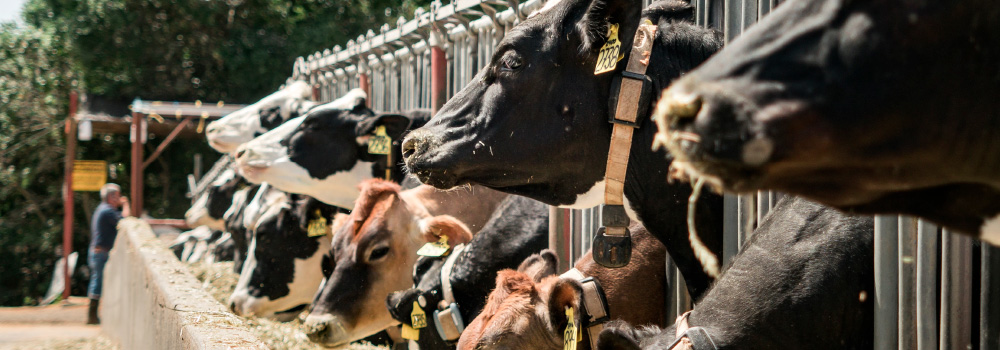
Problem
California is the nation’s top milk-producing state. It is critical to keep dairy cows cool during the hot summer months. Standard cooling methods, however, such as fans and spraying cows with water, require substantial amounts of electricity and water.
Goal & Results
2019
With funding from the California Energy Commission, the UC Davis Western Cooling Efficiency Center and the Department of Animal Science tested novel approaches for cooling dairy cows in a small-scale study. Researchers measured energy and water use and monitored the cows to determine the impact of four treatments:- Baseline–a fan in the bed area with sprayers in the feed area.
- “Optimized” Baseline–a fan and sprayers in the feed area.
- Conduction Cooling “Mats”–the bed area is cooled using heat exchange mats. Water in the mats is cooled through a novel evaporative chiller.
- Convection Cooling “Ducts”–fabric ducting directs cool air onto the cows in the bed and feed areas. The air is cooled using a direct evaporative cooler.
- Convection Cooling Ducts and Optimized Baseline were effective at reducing heat stress in cows.
- All cooling methods tested saved water in comparison to the baseline, however, the Convection Cooling Ducts used more electricity in the field test than anticipated. Researchers built and tested a higher efficiency evaporative cooler to reduce the Ducts energy use.
Solution
With the goal of reducing electricity and water consumption, WCEC and the UC Davis Department of Animal Science tested novel approaches for cooling dairy cows in California. New approaches to keeping cows cool will help dairies improve their productivity and cow health, while helping California meet its energy, water and climate goals.
